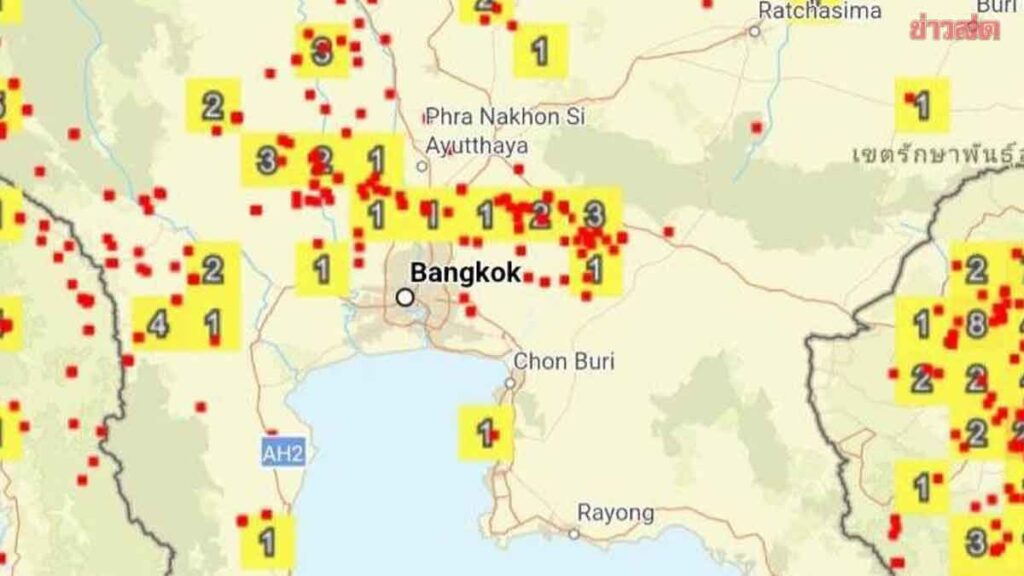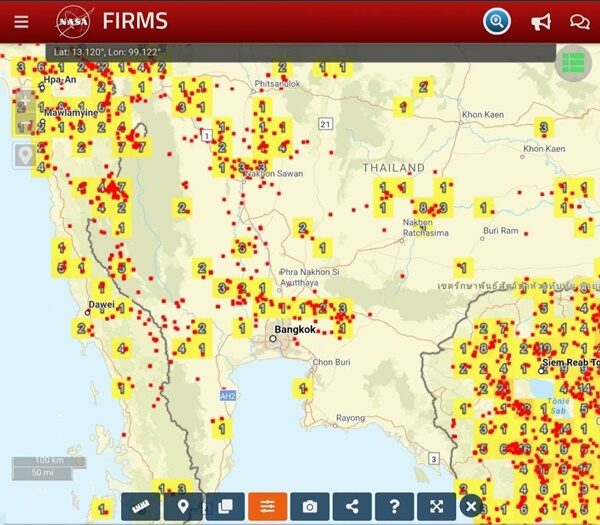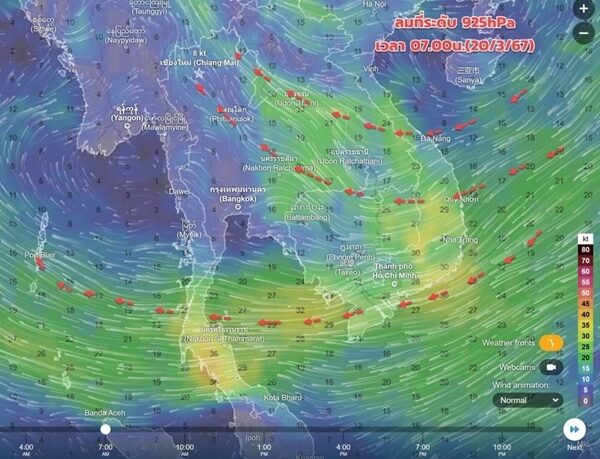Bangkok residents were bewildered by a peculiar burning smell permeating the city during the late hours of March 20, 2024. Reports flooded in, detailing an unsettling atmosphere of smoke in various areas surrounding the capital. The Bangkok Metropolitan Administration (BMA) swiftly addressed concerns, shedding light on three key factors contributing to the phenomenon.
According to the BMA, the prevailing easterly wind direction on March 20 differed from the usual pattern originating from the Gulf of Thailand. This alteration, coupled with recent burn sites discovered in the vicinity over the preceding 24 hours, intensified the situation.
Furthermore, meteorological instability during this period, characterized by erratic weather and summer storms, played a significant role. High atmospheric pressure from the northeast further exacerbated conditions, resulting in a decrease in the mixing height and heightened dust accumulation.


The third factor identified by the BMA pointed to atmospheric humidity, which facilitated the formation of secondary PM2.5 dust particles. Specifically, nitrogen and ammonia compounds reacted vigorously under high-humidity conditions, contributing to elevated levels of particulate matter.
While the source of the burning smell remains under investigation, the BMA’s clarification provides insight into the complex interplay of meteorological and environmental factors affecting air quality in Bangkok and surrounding areas.




